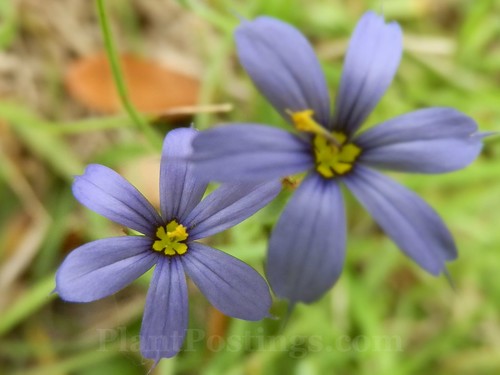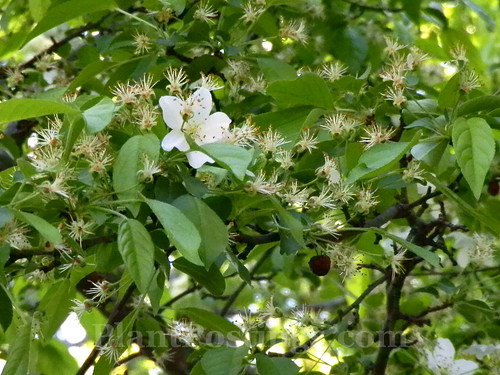 |
| Prunus virginiana |
Something about this spring has had me on edge.
I'm not sure why--could be family events, personal thoughts, or other factors completely unrelated to gardening. Nothing major, just a strange sense of joyful anticipation mixed with minor anxiety.
But some of my thoughts, as always, have centered on the garden and the weather. Making peace with this edgy moodiness is the biggest lesson I've learned this spring.
As I reflect on "Garden Lessons Learned" during the past three months, the biggest one is to simply take it all in and accept that Mother Nature's miracles will happen on their own time.
 |
| Trillium grandiflorum |
Like the appearance of the Trilliums: If they don't pop up after the first few warm spells, don't worry. They might know something you don't--like, perhaps there will be a few more frosty nights before the warmth settles in for the season.
 |
| Asclepias tuberosa |
Same for the Milkweeds. Once they emerge, the Monarchs can't be far behind. And we don't want Monarchs freezing because they made the trip too early.

Hummingbirds will find their way back to your garden. Give them the blooming plants and the nectar they need, and they'll find their way back to you.
 |
| Hesperis matronalis |
You know you're going to have to pull invasive plants like Garlic Mustard and Dame's Rocket. Wait until the plants are a little larger and after a good rain (but before they go to seed). They'll be easier to pull. Plus, the Garlic Mustard tastes great in salad, and the Dame's Rocket is lovely in a vase.
 |
| Lablab purpureus |
Grow Hyacinth Bean vines from seed. But don't put them directly in the cold, wet ground. Grow them in pots under a coldframe, instead. They'll warm up and grow into healthy, solid plants ready for planting in the warm, late May soil.
 |
| Syringa meyeri 'Palibin' |
When Magnolias, Crabapples, and Lilacs are all blooming at the same time, don't be sad that springtime is passing. Instead enjoy the magic of the moment.
These are not so much lessons in patience, which is a given, but lessons in watchfulness and mindfulness ... enjoying and observing what's happening now, instead of anticipating what you think should be or will be happening very soon.

What did you learn this season? To join in the "Garden Lessons Learned" meme, simply write a post or share one you've already written about lessons you've learned during the past season. Then share your links or simple observations in the comments. I'll keep this post up for a few days, and it will be available always under the "Lessons Learned" tab at the top of this blog.
Please also join in Donna's Seasonal Celebrations at Gardens Eye View! Feel free to join in with a post that fits both memes, or separate posts for one or both of them.

















































